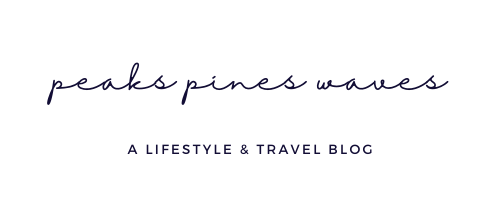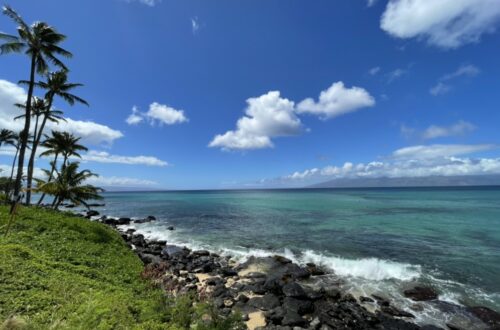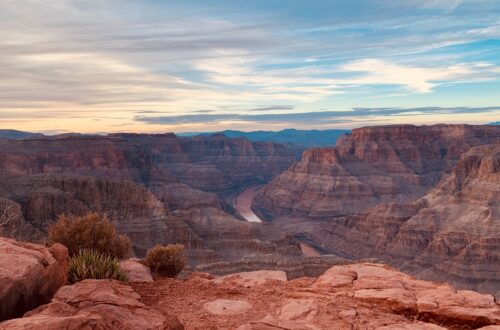
Yellowstone and Grand Teton National Parks Trip
This post may contain affiliate links; please read my disclosure policy.
In September a few years ago, we set out on a week-long road trip from Denver to visit and explore Yellowstone and Grand Teton National Parks in our neighboring state of Wyoming. My husband loves wildlife, and one of the best times to visit Yellowstone is in September during the elk rut (mating season), when the males are the most active. Yellowstone is also known for grizzly bears, wolves, bison, moose, black bears, and bighorn sheep to name a few. Grand Teton is also known for grizzly and black bears, elk and moose. After visiting the parks, I would say that when I think of Yellowstone, I think of grizzly bears and wolves; and when I think of Grand Teton, I think of moose.
Yellowstone has some options for hiking but it’s mainly driving around the loop road, looking for wildlife and stopping at viewpoints for short hikes/walks. Grand Teton has longer hikes where you get into the mountains. The southern side of Yellowstone is borders the northern side of Grand Teton, so if you’re going to visit one you should really visit both.
Day 1 – Travel Day
For our trip, we drove to the parks from Denver. The closest entrance for us was on the east side near Cody, WY. The drive was about 8 hours to where we were staying – the Green Creek Inn (2-star hotel and RV park; average $150-200/night). The drive was incredibly scenic and easy. We put on a podcast and were there before we knew it. The route takes you north along I-25 to Casper, WY and then northwest towards and then through the Wind River Reservation along the Wind River then to Cody, WY.
There are seven airports in the vicinity of Yellowstone and five entrances to the park. You can fly into Bozeman, MT and use the North Entrance or Billings, MT and use the Northeast Entrance. If you fly into Idaho Falls, ID or West Yellowstone, MT (only during summer), you’d enter the park from the West Entrance. From Jackson, WY, you’d use the South Entrance through Grand Teton National Park. And finally, from Cody, WY you would enter the park through the East Entrance.
This trip’s itinerary is starts on the east side of the park. We made our way around the loop road within Yellowstone before heading south to Grand Teton and then Jackson, WY. Definitely take time to look at maps of the parks beforehand. Yellowstone is huge and can feel overwhelming if you don’t plan ahead. There are villages at the various road junctions throughout the park that have gas stations and general stores, in addition to some hotels and restaurants, so you don’t have to worry about leaving the park while visiting.
Day 2 – Yellowstone
Southern Half of the South Loop Road
For the first “real” day of our trip, we headed into Yellowstone! The park has a figure-eight shaped road in the center which connects all of the entrances. Our plan was to focus on the southern half of the loop road and tackle the second half the next day.
Yellowstone Lake is located where the east entrance meets the loop road. The drive to the lake and then around the northern shore is incredibly scenic, so go slow. It’s a good idea to drive slowly (sorry to people in a rush) throughout the entire park and keep an eye out for wildlife. Our first stop was Kepler Cascades, a waterfall just before Old Faithful. There’s a parking lot on the west side of the roadway, where you can walk to the viewpoint to see the 150-ft waterfall.
Of course, we had to stop at Old Faithful, the geyser is an iconic part of Yellowstone. You can view the spring from the boardwalk or you can hike to Observation Point for a view of the spring 262-ft above the boardwalk. At 1.5 miles round trip, it’s a great easy option to stretch your legs or to take up time waiting for the geyser to erupt. Be sure to check the park’s website for predictions on when the geyser will erupt. Otherwise, you could be sitting around waiting for awhile. The view isn’t bad from the geyser, but there’s a lot to see in the park.
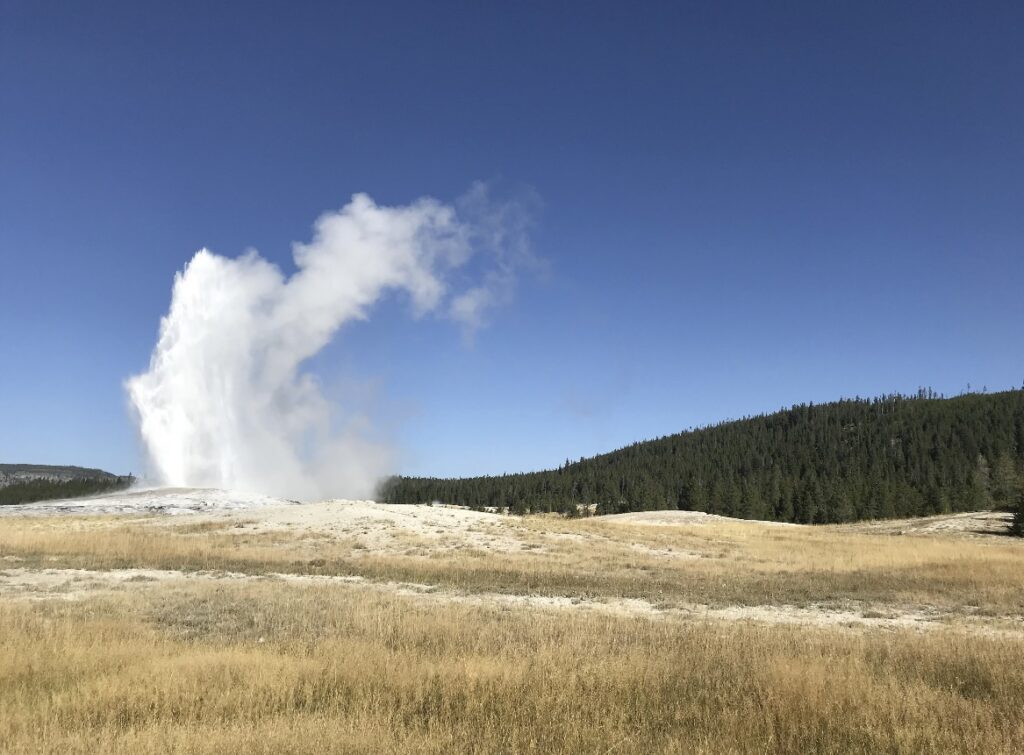
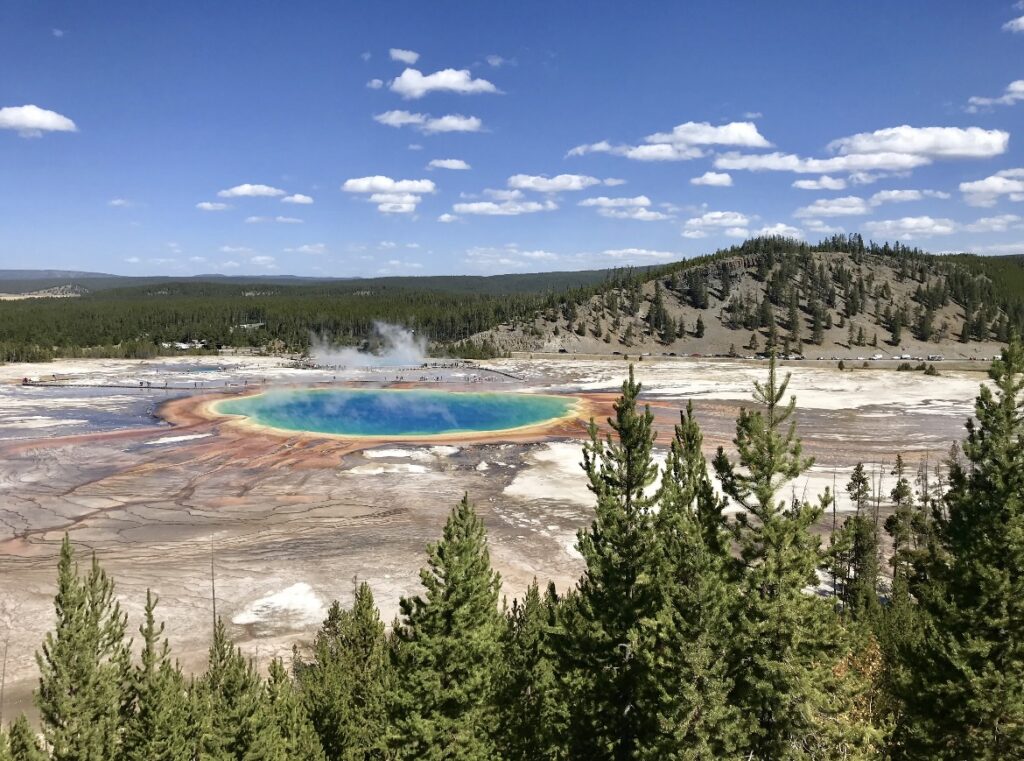
Northern Half of the South Loop Road
About 6 miles north of Old Faithful, we stopped at the parking lot for the Fairy Falls trailhead. Neither this trail nor our destination is on Yellowstone’s map. We wanted to get up above the Grand Prismatic Hot Spring and used the beginning of the Fairy Falls Trail to do so. The hike is 1.5 miles with 200-ft of elevation change and gives you an awesome view of the Grand Prismatic Hot Spring. There is a boardwalk that leads you to the hot spring, but it’s huge and you don’t get the full effect at eye level, in my opinion.
Across from the exit of Firehole Lake Drive is the parking lot for Fountain Paint Pot Trail. If you want to stretch your legs and see a lot of geysers, this is a great option. The parking lot is larger than most in the park and after walking 0.6 miles, you will have seen 10 geysers and springs. There’s an upper portion included in the 0.6 miles, where you can see some of the geysers from a bird’s eye view. This is what we did! If you’re not aware, these areas will have a strong sulphur smell (think rotten eggs).
Another great stop is Norris Geyser Basin. There’s a 2.9 mile easy trail/boardwalk that will take you to almost 40 geysers and hot springs along the way. This was a perfect option to end our first day in the park.
While we made our way northeast to Canyon Village we stopped at the Gibbon Falls overlook. The viewpoint is a short walk from the parking lot and was totally worth it! After this stop, we were pretty tired so we headed to Canyon Village to set up our campground for the night.
Highlights of the Day
- Kepler Cascades
- Old Faithful
- Observation Point Trail
- Grand Prismatic Hot Spring
- Fountain Paint Pot Trail
- Gibbon Falls
- Norris Geyser Basin Trail
- Camp at the Canyon Campground ($34)
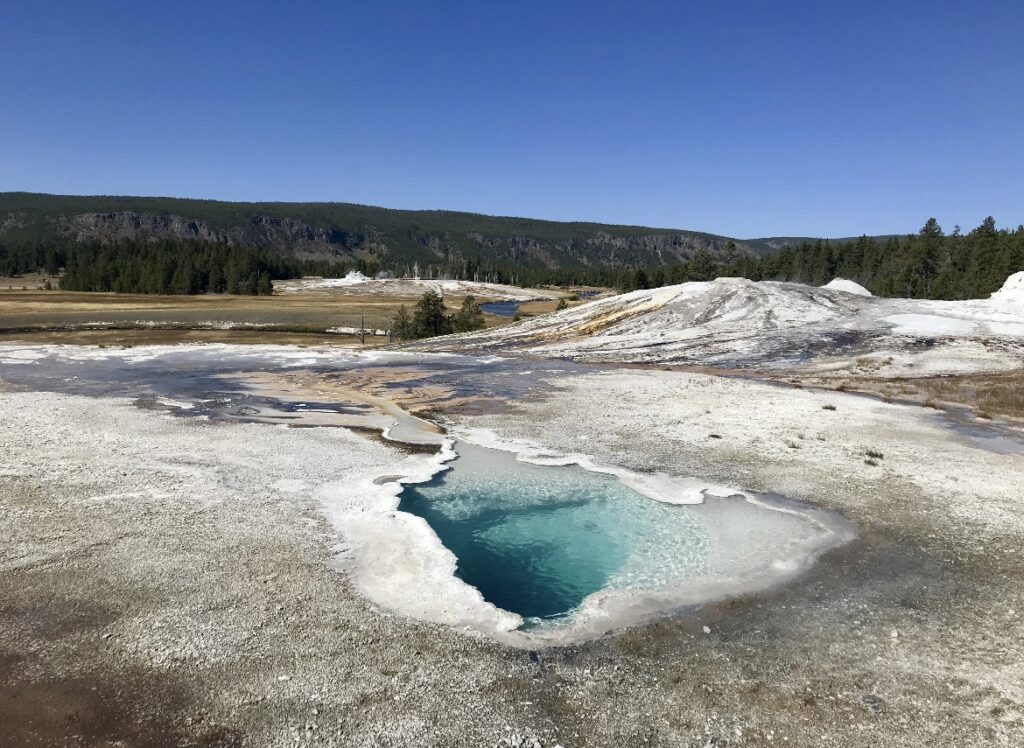
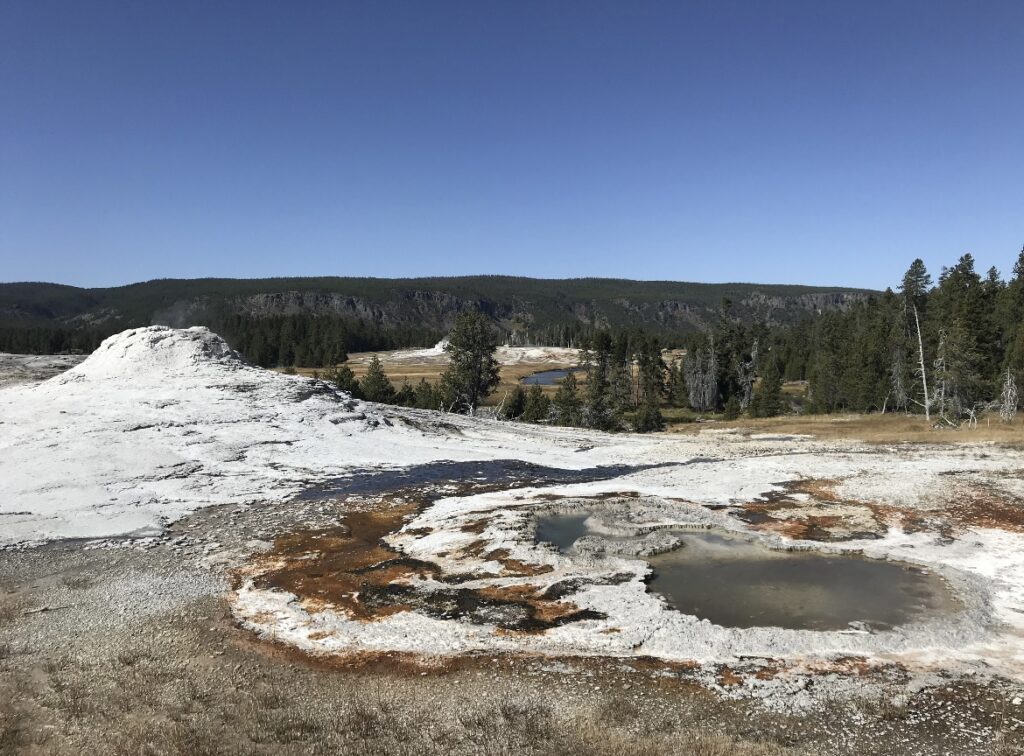
Day 3 – Yellowstone
What we didn’t anticipate on our trip was how cold it got at night. In the middle of September, it got down to the mid-20’s. Yellowstone is known for their wolf population. A great way to try to see some, is to head to Lamar Valley in the morning. As hard as it was to leave the tent, we headed out early and drove an hour to the Valley. If you don’t know where to stop along the road, look for people with binoculars and fancy cameras. We didn’t see any wolves, but it was a very peaceful morning and totally worth it.
After a while, we decided to get a start on the day and headed back towards the loop road. Just south of Lamar Valley is the trailhead for Tower Falls. The trail is just under 1-mile roundtrip with 252-ft of elevation change and takes you to a viewpoint for the 132-ft waterfall. It was beautiful and not too busy yet.
Our next stop was Mammoth Hot Springs. This area of Yellowstone was so different than anything we say the day before. It was so cool! The Mammoth Terraces and Upper Loop is another trail and boardwalk that will take you up close to over 20 springs and terraces. There are three trailheads, so don’t be discouraged if the first lot is full!
Lastly, we made our way back to Canyon Village. Early in the evening we headed to the Grand Canyon of the Yellowstone. This area has a lot of hiking options. We decided on the South Rim Trail and stopped at the Upper and Lower Falls overlooks as well as Artist Point, which was probably closer to 3 miles. No matter which side you hike, be sure to see both the Upper and Lower Falls!
Highlights of the Day
- Lamar Valley
- Mammoth Hot Springs
- Tower Falls
- Grand Canyon of the Yellowstone
- Camp at the Canyon Campground ($34)
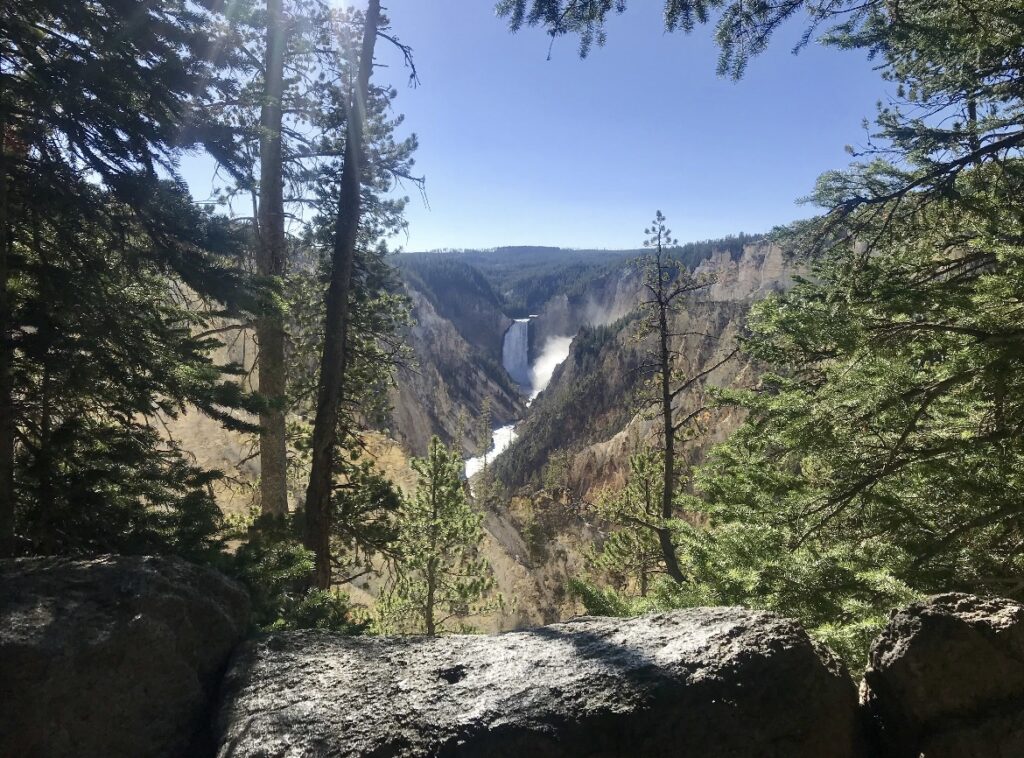

Day 4 – Yellowstone and Grand Teton
Yellowstone
On the fourth day of our trip, we headed south to Grand Teton National Park! It’s about a 2-hour drive from Canyon Village to Jackson Lake. This was our last chance of this trip to see Yellowstone, so we made a few stops along the way. First up was the Mud Volcano trail. This trail was another trail and boardwalk combination. The areas around geysers and hot springs are unpredictable, so there are boardwalks throughout the park for the safety of guests viewing the hot springs and geysers.
Once you pass Yellowstone Lake, you’ll find Lewis Lake and Lewis Falls. We stopped at the viewpoint for Lewis Falls to stretch our legs and see the waterfalls. The waterfall is one of the shorter falls in the park, but still an incredible stop!
Just before you exit Yellowstone, there’s a pull-off spot for Moose Falls. Another beautiful waterfall and chance to get out of the car for a moment.
Grand Teton
Between Yellowstone and Grand Teton, you’ll pass the Headwater’s Lodge & Cabins at Flagg Ranch – this is where we stayed. When we went on this trip a few years ago, all of the campgrounds in Grand Teton were first-come, first-served. It looks like that’s no longer the case, and all campgrounds are reservation only.
We headed into the park for the afternoon and our first stop was the Trapper Grill for lunch. Maybe it was the days of camping food, but this place was great! (It has 4.4 stars so I think it’s good regardless)
Our next stop, after lunch, was the trailhead for the Taggart and Bradley Lakes hike. The hike is 6 miles long with 761-ft of elevation changes and is considered moderate. This one had a great mix of forest, lake views, and mountain views. Also, we didn’t see many people on this trail which was a huge plus after how busy Yellowstone was.
The goal for the rest of the day was to see a moose. We headed further south to Phelps Lake, which is supposed to be a spot where you’re more likely to see a moose. There’s a trail around the lake but we got lucky and there was a moose laying in the field near the trailhead! It wasn’t easy to see and there were rangers nearby watching people but we got a peak and felt accomplished.
After stopping at Phelps Lake, we had to head north back to Headwaters at Flagg Ranch. We stayed at the Headwaters Camper Cabins, which were about $80-100 per night. They are very basic cabins without electricity or water, so it’s practically camping but in a wooden “cabin.” Again, reserving campsites wasn’t an option when we went otherwise we would’ve been at a campground.
Highlights of the Day
- Mud Volcano
- Lewis Falls
- Moose Falls
- Taggart & Bradley Lakes
- Phelps Lake
- Signal Mountain Summit Road (for sunset)
- Stay at Headwater’s Lodge & Cabins at Flagg Ranch
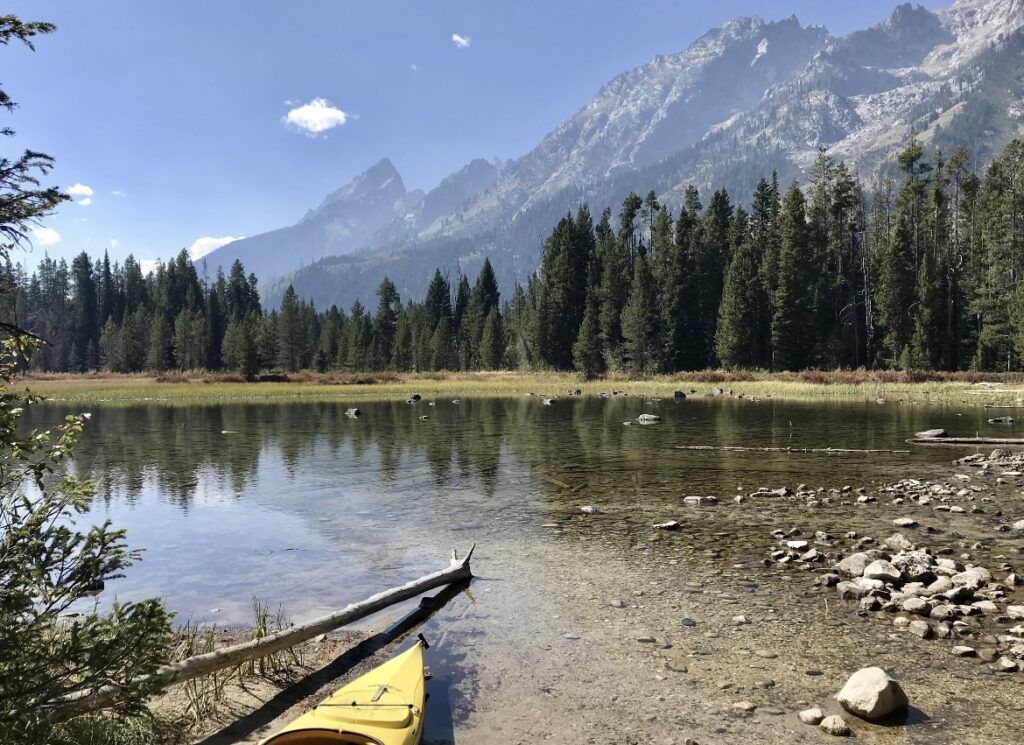
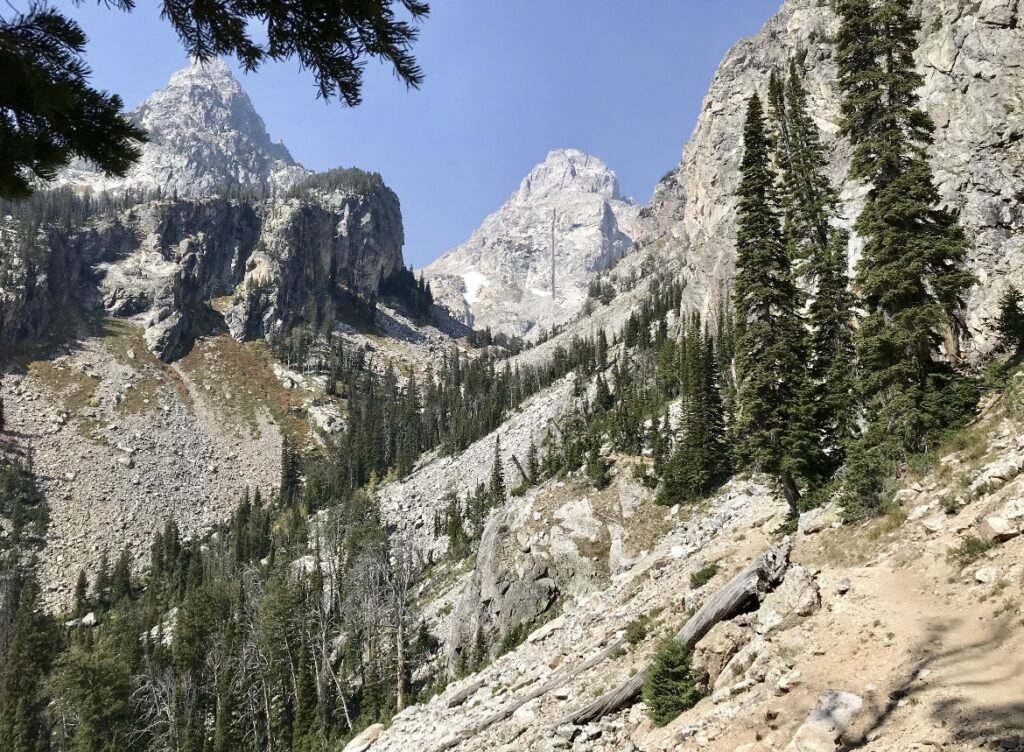
Day 5 – Grand Teton
On the fifth day, we were craving a longer hike into the Tetons. So, we headed to the trailhead for Garnet Canyon. This hike was 7.7 miles with 2,260-ft of elevation change and is considered difficult. The first part of the hike is along the Valley Trail, then you’ll come to a junction where you stay straight towards Garnet Canyon/Amphitheater and Sunrise Lakes. After a few switchbacks, you’ll take the fork towards Garnet Canyon. It’s just under a mile from there to the end of the trail, right around the Platform Campsites.
The trail continues beyond this point to the Lower and Middle Tetons. It’s another 4.5 miles roundtrip and 3,061-ft of elevation change from the end of the Garnet Canyon Trail to the Lower Saddle. Or it would be another 4.9 miles and additional 3,780-ft of elevation change to the Middle Teton from the Platform Campsites. We didn’t do either of these, but I’m sure it’d be awesome to get up close and personal to the Tetons.
After the hike to Garnet Canyon, we wanted to try to see a moose again. After talking to some rangers, we headed to the Moose Ponds to test our luck. The ponds aren’t shown on the park map, but you’ll want to head to the Jenny Lake Parking area and then head southeast on the Jenny Lake Trail along the shoreline. The loop for Moose Ponds is 3.2 miles and is pretty flat. We got lucky here and saw a mama moose and her calf in one of the ponds!
Nearby Lupine Meadows is supposed to be a great viewing spot, too. We were pretty tired after this, so we headed back to the Signal Mountain Summit Road to watch the sunset and then back to our cabin for the night.
Highlights of the Day
- Granite Canyon
- Moose Ponds
- Stay at Headwater’s Lodge & Cabins at Flagg Ranch
Day 6 – Grand Teton and Jackson, WY
On our last day, we made sure to stop at all of the viewpoints on the southern end of the park, before heading to Jackson. First, we went to Oxbow Bend to watch the sunrise. The view from this spot if always beautiful, but it’s supposed to be the best in the morning.
From there, we headed south to the Snake River Overlook. It’s a short walk to the official viewpoint, but the views are incredible from the moment you get out of the car. A little further south is Schwabacher’s Landing Trail, which is a 1.8 mile flat walk to the Snake River. Both spots are worth stopping at.
Our last stop, within the park was Mormon Row. The historical landmark includes 27 homesteads built by the Mormons in the 1890’s and is a very popular photo spot within Grand Teton National Park.
After leaving the park, we drove south to Jackson, WY. We had a blast exploring the town. There were so many bakeries, coffee shops, breweries, and restaurants. Not to mention all of the boutique shops and art galleries. Our afternoon was full of walking and food, and we couldn’t have been happier.
Highlights of the Day
- Oxbow Bend
- Snake River Overlook
- Schwabacher’s Landing Trail
- Mormon Row
- Stay in Jackson, Wyoming
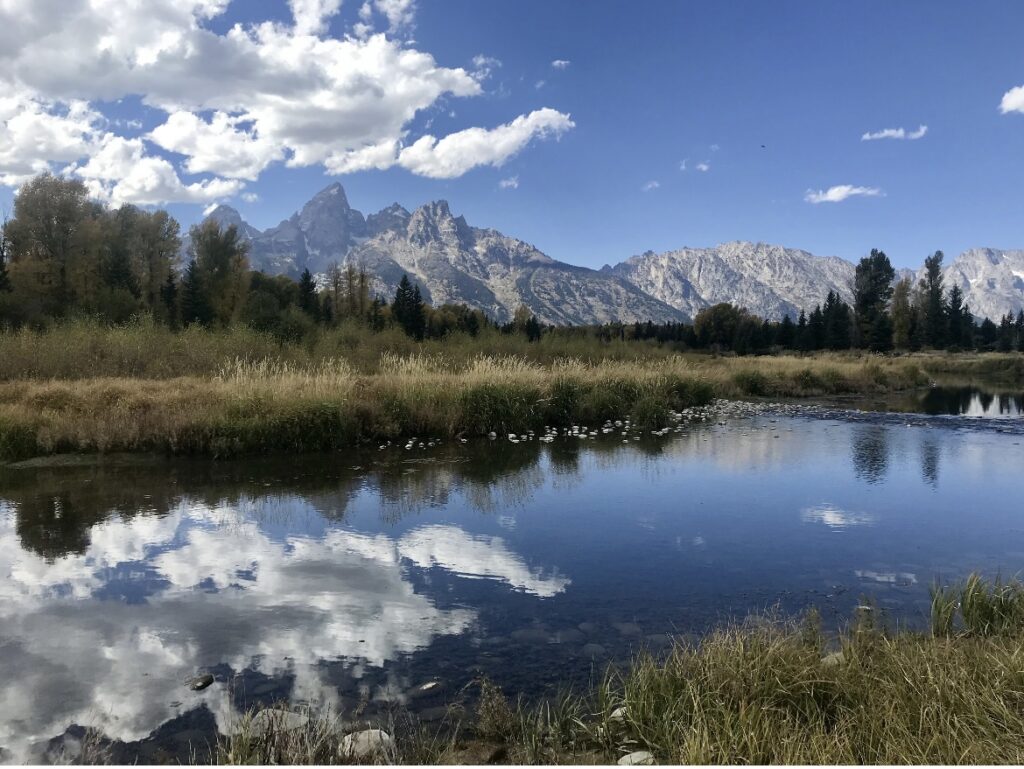
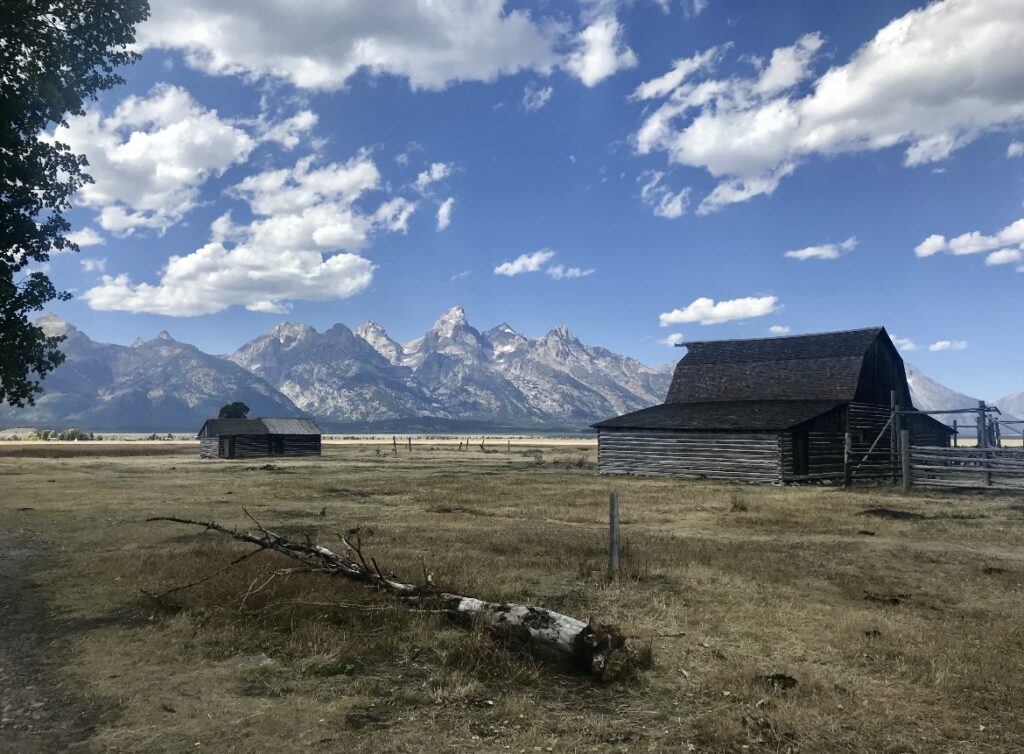
Day 7 – Travel Day
The final day of our trip was an 8-hour drive back to Denver. Obviously not as exciting as the drive to the parks, but we had so many fun memories to talk about. Also, we were routed through northern Colorado, which gave us a new landscape to explore along the way.


